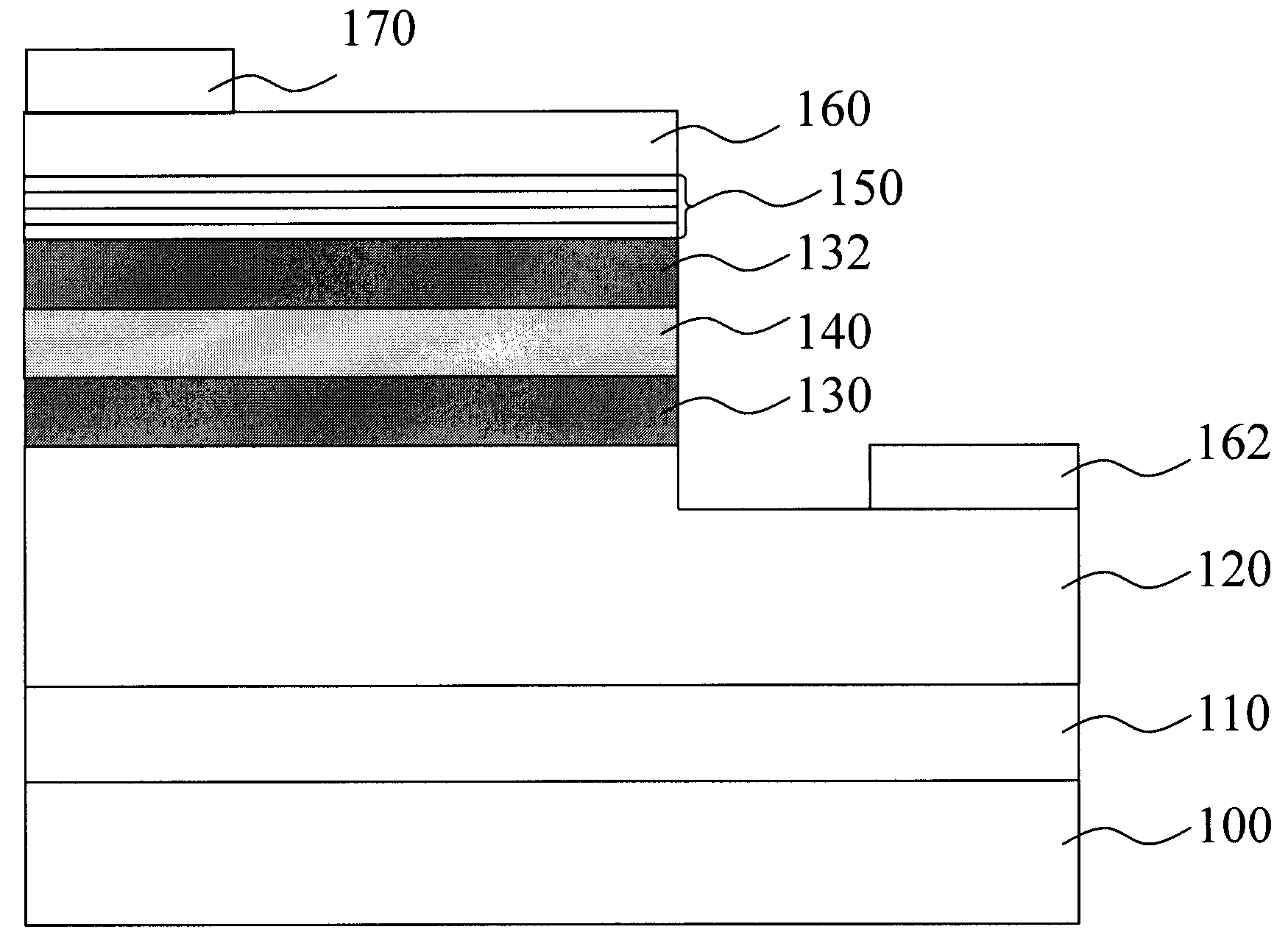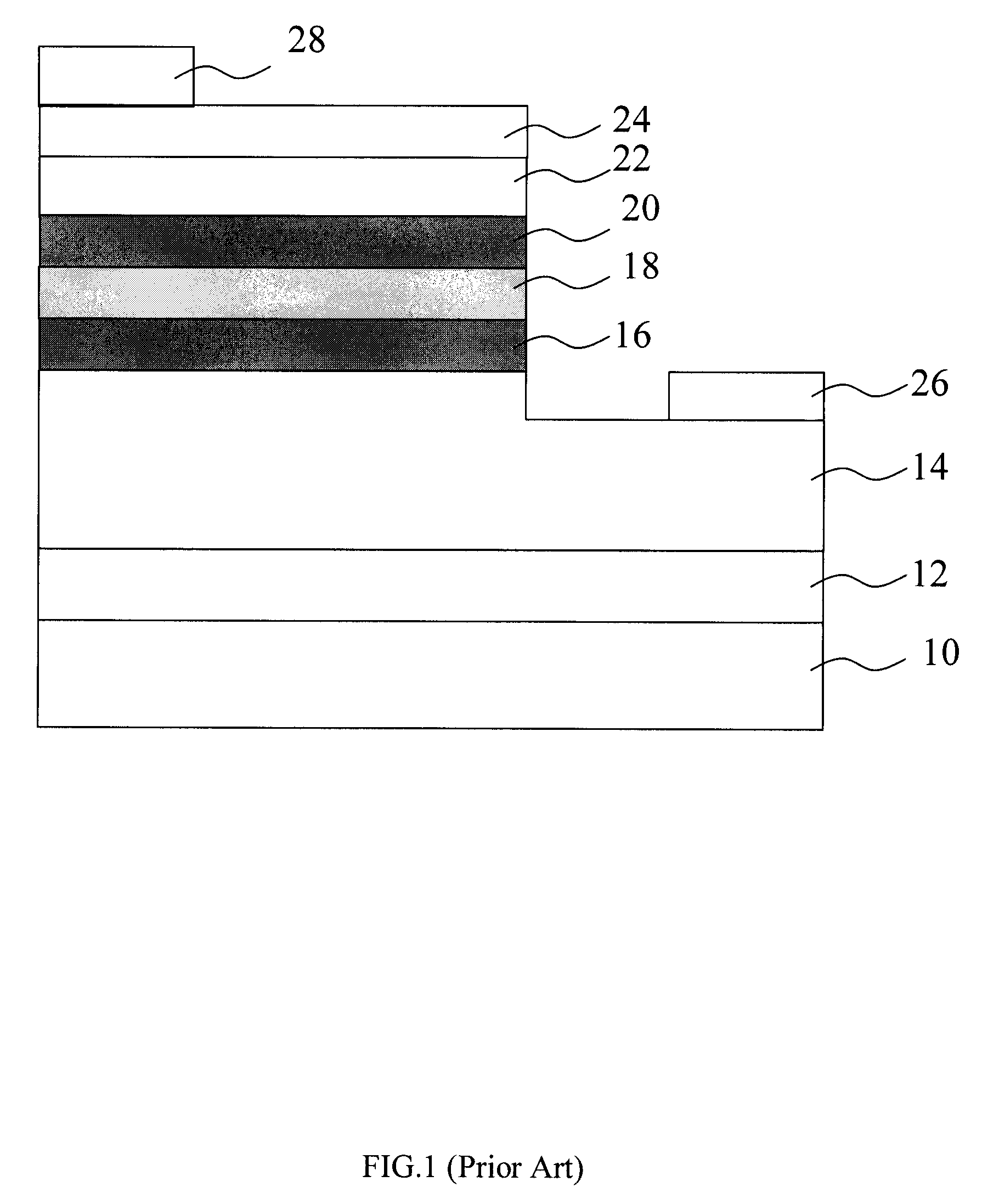Light emitting diode structure
a technology of light-emitting diodes and diodes, which is applied in the direction of basic electric elements, electrical apparatus, and semiconductor devices, can solve the problems of reducing the luminous efficiency of the diodes, reducing the manufacture cost of the diodes, and restricting the emitting area of the diodes, so as to achieve high conductivity and facilitate the generation of contact layers
- Summary
- Abstract
- Description
- Claims
- Application Information
AI Technical Summary
Benefits of technology
Problems solved by technology
Method used
Image
Examples
Embodiment Construction
[0018]The features and the advantages of the present invention will be readily understood upon a thoughtful deliberation of the following detailed description of a preferred embodiment of the present invention with reference to the accompanying drawings.
[0019]Since a multilayer structure grows easily into a diode's contact layer made of nitride semiconductor material of high conductivity (high carrier concentration), the current may not be limited to the electrode thanks to lower resistance characteristics and better current spreading. And, the contact layer made of the multilayer structure has a higher carrier concentration than the bulk layer, so the subsequent transparent electrode can easily generate Ohmic contact with it, rather than Schottky contact that leads to higher operating voltage of elements due to insufficient carrier concentration. In addition, the transparent electrode and the contact layer of multilayer structure can be made of the same conducting materials so that...
PUM
 Login to View More
Login to View More Abstract
Description
Claims
Application Information
 Login to View More
Login to View More - R&D
- Intellectual Property
- Life Sciences
- Materials
- Tech Scout
- Unparalleled Data Quality
- Higher Quality Content
- 60% Fewer Hallucinations
Browse by: Latest US Patents, China's latest patents, Technical Efficacy Thesaurus, Application Domain, Technology Topic, Popular Technical Reports.
© 2025 PatSnap. All rights reserved.Legal|Privacy policy|Modern Slavery Act Transparency Statement|Sitemap|About US| Contact US: help@patsnap.com



